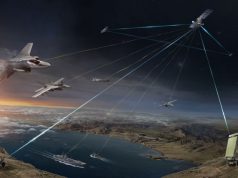
The US Space Force carried out a low-profile satellite launch, dubbed Tactically Responsive Launch-2 (TacRL-2) mission, from the Vandenberg Space Force Base on June 13.
The technology demonstration satellite was delivered to Low Earth Orbit on a Northrop Grumman Pegasus XL rocket.
Pegasus is an air-launched three-staged rocket carried aloft by Northrop Grumman’s specially modified “Stargazer” L-1011 aircraft. Shortly after its release from Stargazer, at approximately 40,000 feet above the Pacific Ocean, Pegasus ignited its first stage, beginning its successful flight carrying TacRL-2 to its intended orbit.
Tactically responsive launch, as a concept, seeks to introduce speed, agility, and flexibility into the launch enterprise in order to respond to dynamic changes in the space domain or an operational theater and insert or replace assets on orbit much faster than standard timelines to meet emerging combatant command requirements.
“Today’s successful launch is a clear signal to our strategic competitors that we will not cede access to space,” said Chief of Space Operations Gen. John W. “Jay” Raymond.
“When I challenged the Space and Missile Systems Center about a year ago to demonstrate a responsive space capability, they accepted and delivered! The team presented an integrated Space Domain Awareness satellite ready for launch in record time; what normally would have required two to five years, took 11 months.
“The space domain is defined by speed,” Raymond said. “And with this effort, we demonstrated the kind of speed it will take to win. We executed a ‘21-day call-up’ to get a satellite on orbit – pulling the payload, mating it with the rocket and integrating the combined package onto the aircraft.”

The TacRL-2 mission was executed by the Small Launch and Targets Division within the Space and Missile Systems Center’s Launch Enterprise, in partnership with SMC’s Space Safari Office, and launched a satellite built and operated by the Air Force Research Laboratory and Space Dynamics Laboratory.
During a six-month standby period, a notice to launch was executed and the satellite launched several weeks later, exercising concept of operations, tactics, techniques and procedures required of a responsive launch.
“I am very pleased with the success of this tactical launch demonstrating rapid and responsive technologies, and what it means for the continuous Space Force support to the warfighter,” said Lt. Col. Ryan Rose, chief, Small Launch and Targets Division. “The team completed the launch vehicle design, build, integration and testing in only four months from contract award, and then executed the launch within a few weeks of call-up.”
TacRL-2 was the first mission supported by SMC’s new Space Safari Program Office. Space Safari rapidly integrates mature technology and systems to quickly respond to specialized space needs.
For TacRL-2, Space Safari successfully demonstrated their end-to-end approach to tactically responsive missions by acquiring and integrating the space vehicle, launch vehicle, payloads and ground elements in record time, as well as conducting on-orbit planning and operator training.
This mission was a first-of-its-kind effort that has already identified several constraints and lessons learned. The USSF said it would use this information to improve upcoming TacRL missions with the Space Safari office planned to launch in 2022 and 2023.


























